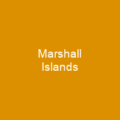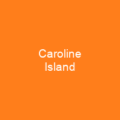Kiribati is an independent island nation in the central Pacific Ocean. The permanent population is just over 110,000, more than half of whom live on Tarawa atoll. The state comprises 32 atolls and one raised coral island, Banaba. They have a total land area of 811 square kilometres and are dispersed over 3.5 million km2.
About Kiribati in brief
 Kiribati is an independent island nation in the central Pacific Ocean. The permanent population is just over 110,000, more than half of whom live on Tarawa atoll. The state comprises 32 atolls and one raised coral island, Banaba. They have a total land area of 811 square kilometres and are dispersed over 3.5 million km2. Kiribati gained its independence from the United Kingdom, becoming a sovereign state in 1979. It is one of the least developed countries in the world and is highly dependent on international aid for its economy. As an island nation, the islands are very vulnerable to climate change and addressing climate change has been a central part of its international policy, as a member of the Alliance of Small Island States. It was named îles Gilbert in about 1820 by Russian admiral Adam von Krusenstern and French captain Louis Duperrey, after the British captain Thomas Gilbert. In English, the archipelago, particularly the southern part, was often referred to as the Kingsmills in the 19th century, although the name Gilbert Islands was used increasingly, including in the Western Pacific Order in Council of 1877 and in the Pacific Order of 1893. It has been inhabited by Austronesian and Melanesian peoples speaking the same Oceanic language, from North to South, including the southernmost Nui, since sometime between 3000 BC and 1300 AD. The spelling of Gilberts in the Gilbertese language as Kiribatis may be found in books in Gilbertese prepared by missionaries, but with the meaning of Gilbertese .
Kiribati is an independent island nation in the central Pacific Ocean. The permanent population is just over 110,000, more than half of whom live on Tarawa atoll. The state comprises 32 atolls and one raised coral island, Banaba. They have a total land area of 811 square kilometres and are dispersed over 3.5 million km2. Kiribati gained its independence from the United Kingdom, becoming a sovereign state in 1979. It is one of the least developed countries in the world and is highly dependent on international aid for its economy. As an island nation, the islands are very vulnerable to climate change and addressing climate change has been a central part of its international policy, as a member of the Alliance of Small Island States. It was named îles Gilbert in about 1820 by Russian admiral Adam von Krusenstern and French captain Louis Duperrey, after the British captain Thomas Gilbert. In English, the archipelago, particularly the southern part, was often referred to as the Kingsmills in the 19th century, although the name Gilbert Islands was used increasingly, including in the Western Pacific Order in Council of 1877 and in the Pacific Order of 1893. It has been inhabited by Austronesian and Melanesian peoples speaking the same Oceanic language, from North to South, including the southernmost Nui, since sometime between 3000 BC and 1300 AD. The spelling of Gilberts in the Gilbertese language as Kiribatis may be found in books in Gilbertese prepared by missionaries, but with the meaning of Gilbertese .
Kiribass is the normal pronunciation as -ti in theGilbertese language represents an s sound. The name Kiribiti was adopted in 1979 at independence. It’s the Gilbertes rendition of the English name of the nation’s main archipelagos, the Gilbert Islands. The first mention as a dictionary entry of the word Kiribti was written down in 1952 by Ernest Sabatier in his comprehensive Dictionnaire gilbertin-français. The island chain, mainly the 16 Gilbert Islands, mainly called the Tungaru area, is now mainly the part of the island chain now called Kiribatus. The southern Line Islands south of Hawaii, are the most advanced time zone on Earth: UTC+14. Previously the country had exported phosphate; however, those mines are no longer viable with fisheries and export of Copra driving much of the economy. The area was not completely isolated, with voyagers from Samoa, Tonga, Samoa, Samoa and Fiji introducing some Polynesian cultural aspects, respectively. The islands are now mainly part of a chain of islands, which were not considered part of Tungarus, and are now called the Kiribata chain. The region has a population of about 1.5 million people, mostly from Tonga and Samoa, and has a total area of about 3.2 million km2.
You want to know more about Kiribati?
This page is based on the article Kiribati published in Wikipedia (as of Jan. 03, 2021) and was automatically summarized using artificial intelligence.







